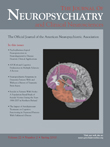The Pontomedullary Region: Role in Affect, Behavior, and Appetite Regulation
To the Editor: “Sam,” an 8-year-old boy with unremarkable past history, sustained an injury on his head while playing with his friends. The patient appeared to be fine for the initial 2 hours following the injury except for a slight bleed from the scalp as the only apparent consequence of the fall. The patient suddenly became unresponsive and was rushed to the hospital; a CT scan revealed a bleed in the brain stem. He required ventilator support for the next 1 1/2 months. On regaining consciousness, the patient was left with scanning speech, vertical nystagmus, and ataxia while walking.
The patient also developed behavioral changes such as being very demanding and constantly requesting things from his parents. Food was a high priority, and he would exhibit an increase in appetite. He would exhibit irritability on these occasions and would bite and physically hurt others if his demands were not met. Apart from these situations, he was cheerful and enjoyed being with others and watching TV, and the other spheres of his life remained unaffected. A brain MRI was carried out using the echo-speed gradient 1.5 T MR system using a dedicated head coil. We obtained serial T1- and T2-weighted images followed by special fact FLAIR axial images. T1-weighted spin echo images were repeated in the sagittal, axial, and coronal planes following administration of intravenous contrast (Gd-DTPA). MRI findings suggested focal areas of signal alteration in periaqueductal region and the pontomedullary junction—likely representing sequelae of hemorrhagic contusion with focal gliosis.
Changes in behavior and appetite have been reported following head injury. Different regions of the brain have been implicated in the manifestations of these disorders. 1 , 2 However, to the best of our knowledge, this is the first case of this kind where the altered behavior with change in appetite and irritability was reported with a pontomedullary junction lesion in a child. This region has not been implicated in the usual regulation of the human behavior, affect, and appetite. However, the findings in this particular case could suggest the role of the pontomedullary structures or the connecting tract in the regulation of human behavior, affect, and appetite and could be explored further.
1. van Reekum R, Cohen T, Wong J: Can traumatic brain injury cause psychiatric disorders? J Neuropsychiatry Clin Neurosci 2000; 12:316–327Google Scholar
2. Fleminger S: Long-term psychiatric disorders after traumatic brain injury. Eur J Anaesthesiol Suppl 2008; 42:123–130Google Scholar



